Up Next

This is a big season for the Haas Formula 1 team following its winter upheaval - and the newly-released VF-24 is inevitably pivotal to it.
Owner Gene Haas has demanded better results without an increase in the budget, but those two things are diametrically opposite - and so better results will be very difficult to achieve unless the outgoing Guenther Steiner/Simone Resta-led management structure really was holding back the technical side and its development.
Only time will tell and the team’s comments right now are keeping initial expectations very low.
But Haas will be judged fairly early in the season and that will be based largely on its 2024 car.
Amid all those management changes has the team simply spent the winter treading water, or has it been let loose to create something more exciting?
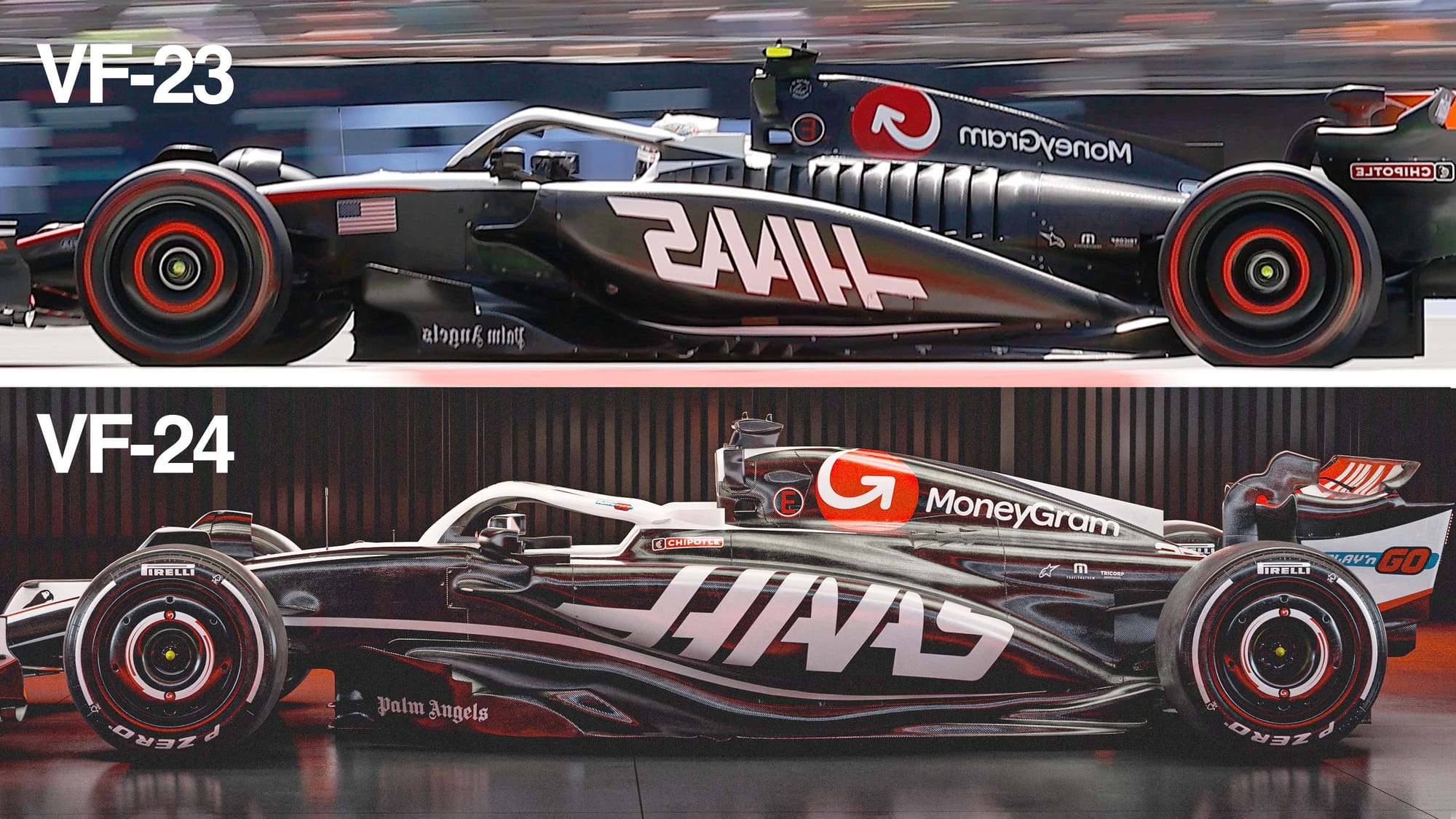
We've seen a set of 10 renders, so let's see what detail we can pick out but also - and crucially - we need to acknowledge what has been hidden or left unclear.
As usual with the launch renders teams release, things will be concealed and angles will be carefully chosen. There are areas where detailed analysis will have to wait until at least the car's shakedown debut on February 11, when I’m sure more pictures will be released, or when it runs in testing and all the F1 photographers get let loose on a more definitive car spec.
For instance there isn't much point in analysing anything around the front wing - because what’s shown in the renders doesn’t look much different from what we saw last year and as it’s a bolt-on component it could be changed before the car actually runs.
But onto the clues these renders do give us.
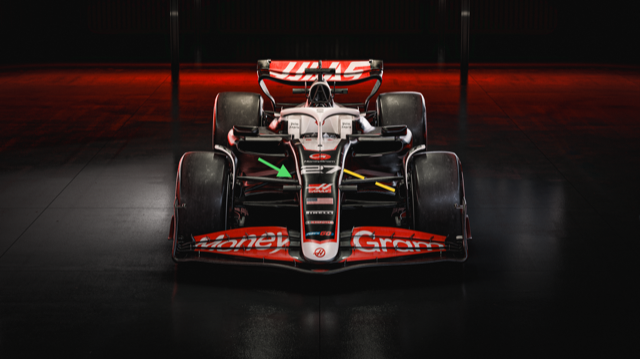
Haas has retained the pushrod front suspension (yellow highlight) and, at least judging by this image, from an angle where you can just about see the top wishbone rear leg chassis pick-up (green arrow), there is a fair amount of anti-dive on the front suspension assembly.
The sidepod design has, unsurprisingly, headed more towards the 2023 Red Bull concept.
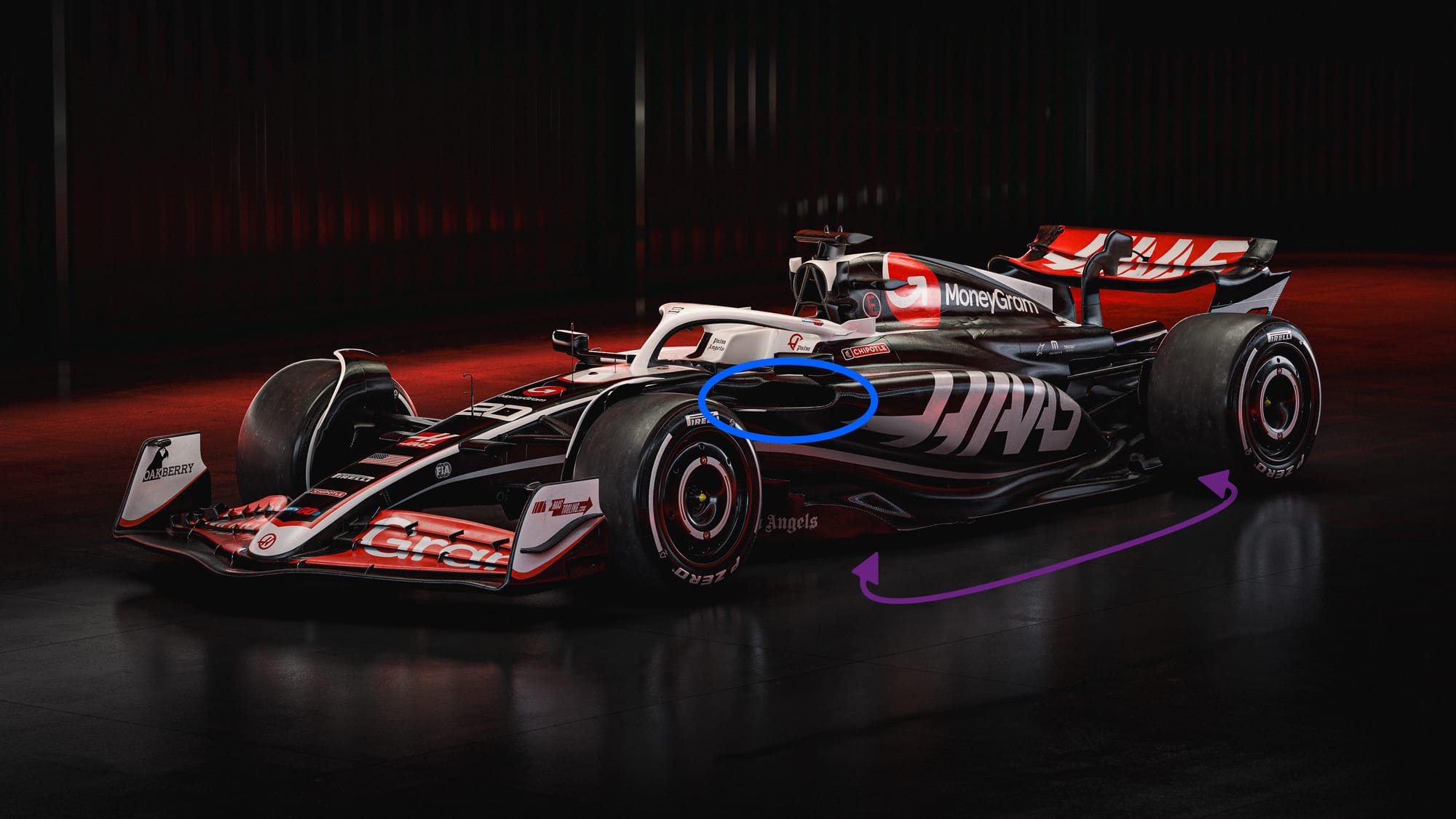
A shallower radiator intake (blue ellipse) allows for an increased undercut between the top surface of the underfloor leading edge and the lower surface of the radiator inlet. This will allow more mass flow through this area, which will theoretically improve the performance of the front corner of the floor.
It's very difficult to see any of the detail along the outer edge (magenta arrows) of the underfloor, so either it hasn't got any or it is in hiding. It’s a very important feature that we can analyse fully when the car reveals itself on track.
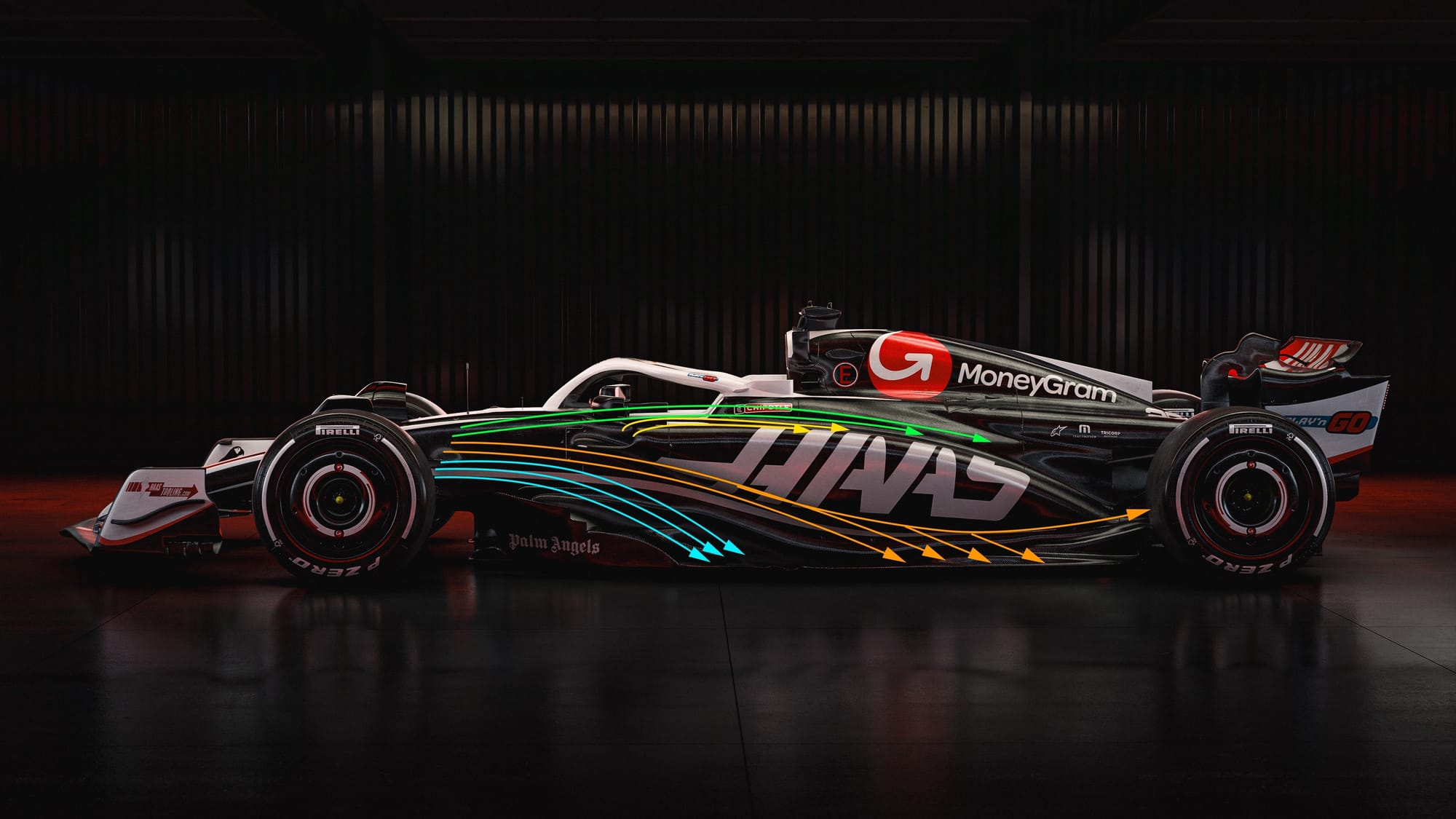
With this style of radiator inlet, the flow lines (green lines) over the top surface of the sidepods are optimised. Having the inlet like this also allows the radiator spillage (yellow lines) to mix with this flow.
This reduces the influence that this spillage, which happens at high speed, has on the performance of the front corner of the underfloor (blue lines) and the aerodynamic sealing system (orange lines) that helps seal the floor further rearward.
Having reduced the sidepod cooling inlet, Haas has had to find some extra cooling somewhere else. The structural rollover bar is very similar to the VF-23, but the team has added 'limpet'-shaped (conical) inlets on the sides of this to increase the cooling flow in that area.
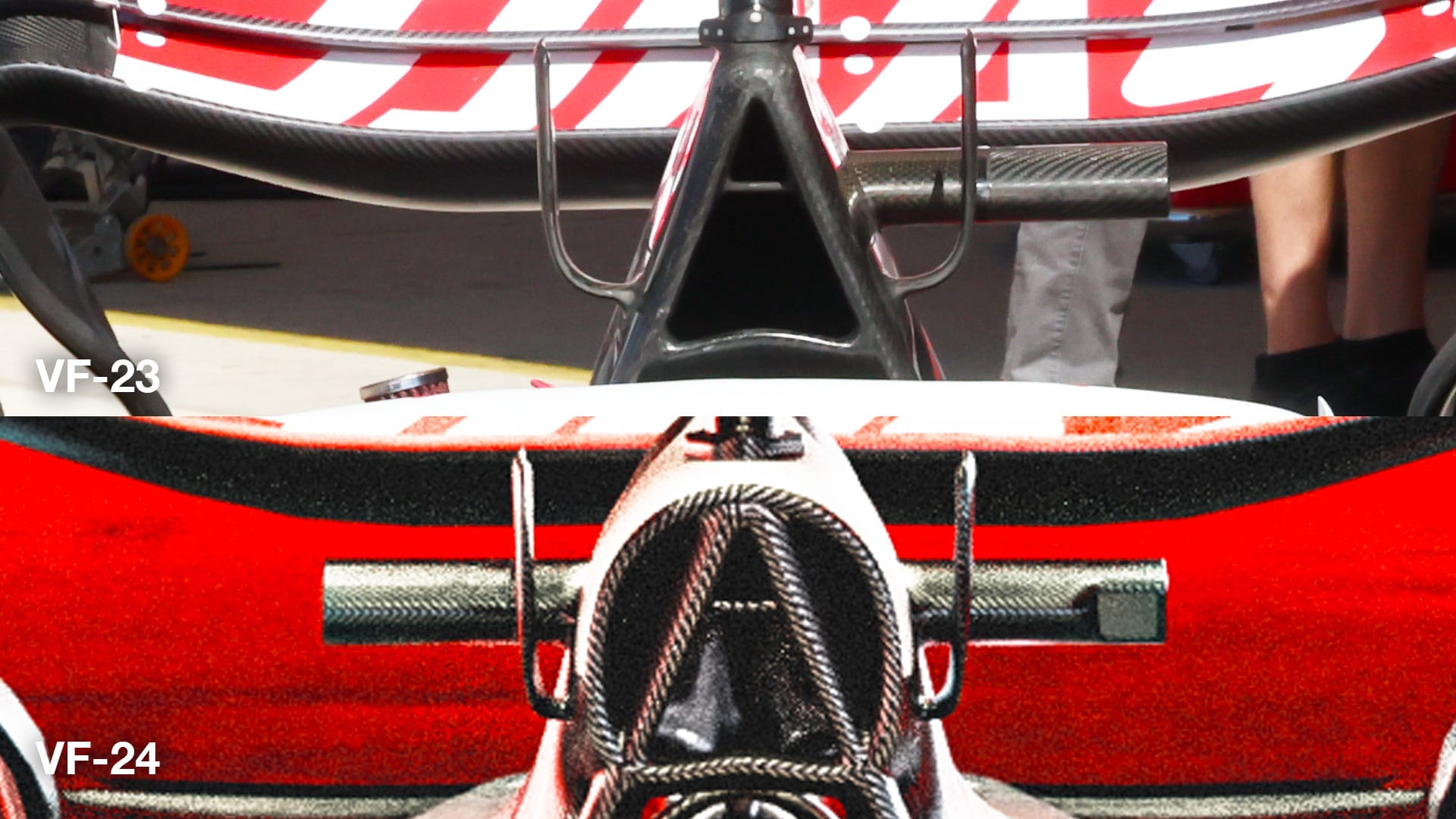
This just shows how important the area around the sidepod inlet is compared to this very visually distinctive area just above the driver’s head. You would think that this rollover bar treatment would have a negative influence on the rear wing, but again it’s all about finding the best set of compromises.
The rear beam wing is also more dramatic. The yellow lines in the image below are what would be called the top flap and the main plane is shown by the red lines, and they are now positioned to improve the performance of the diffuser (green lines).
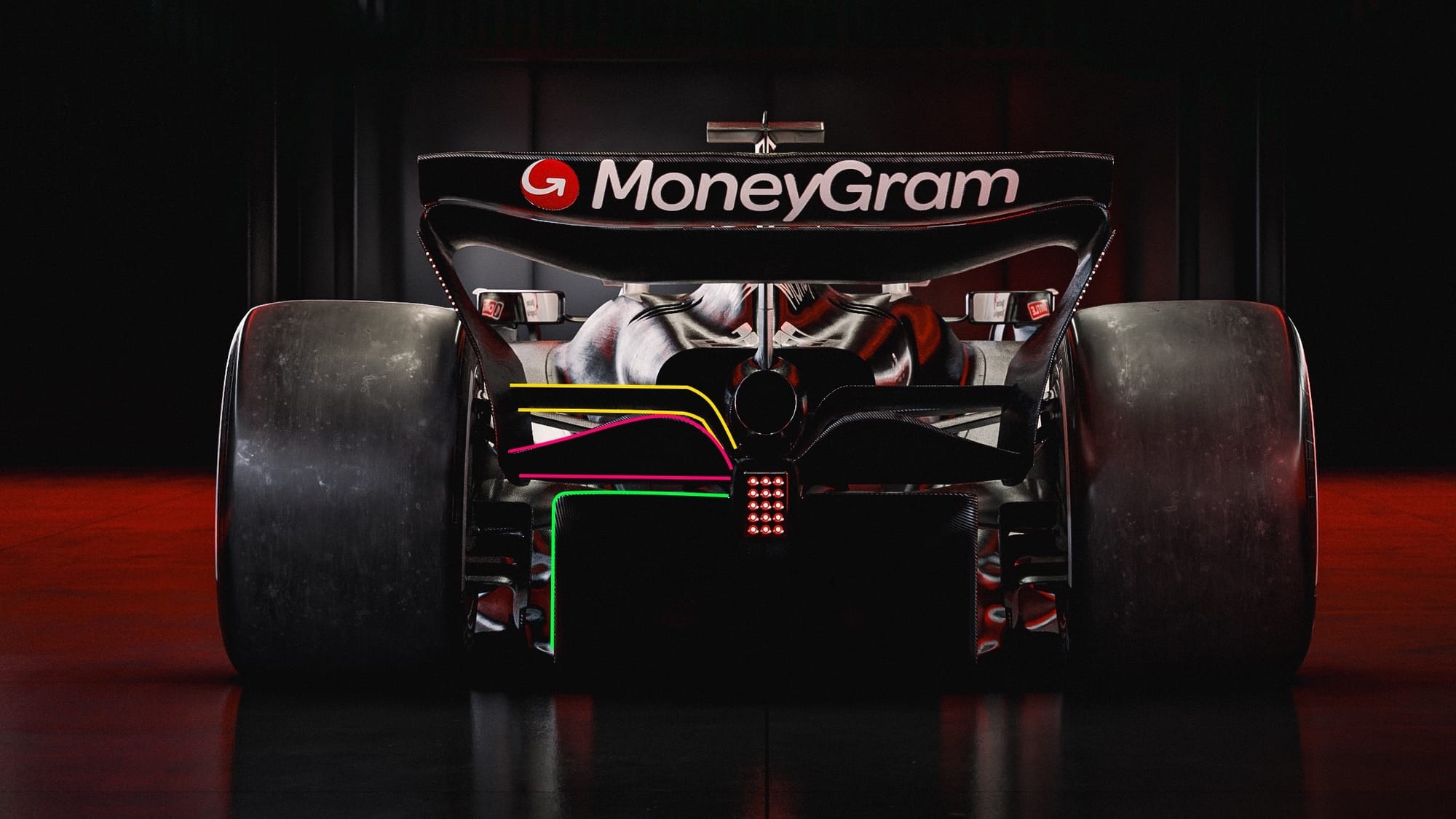
It also looks like the front leg of the upper wishbone is mounted lower on the gearbox. This would mean there is a reasonable amount of anti-lift on the rear suspension, reducing the car's vertical movement under braking.
What Haas has revealed in these initial renders at least suggests it hasn’t been too adventurous and has more or less optimised its 2023 Austin upgrade around a new chassis, which has allowed it to reposition the side impact structures.
Yes, there is some influence from the 2023 Red Bull - but I am expecting quite a lot of that from most of the teams.
But what's clear is that this is very much following the 2023 trend and there's nothing we've seen yet that suggests this is anything other than catching up with the direction Red Bull introduced and optimised as the 2023 season progressed and that was followed by McLaren with its mid-season update last year.
Let’s see if that impression remains when the real car starts running and we can return for a more detailed analysis of what Haas will be using at the start of the season.



